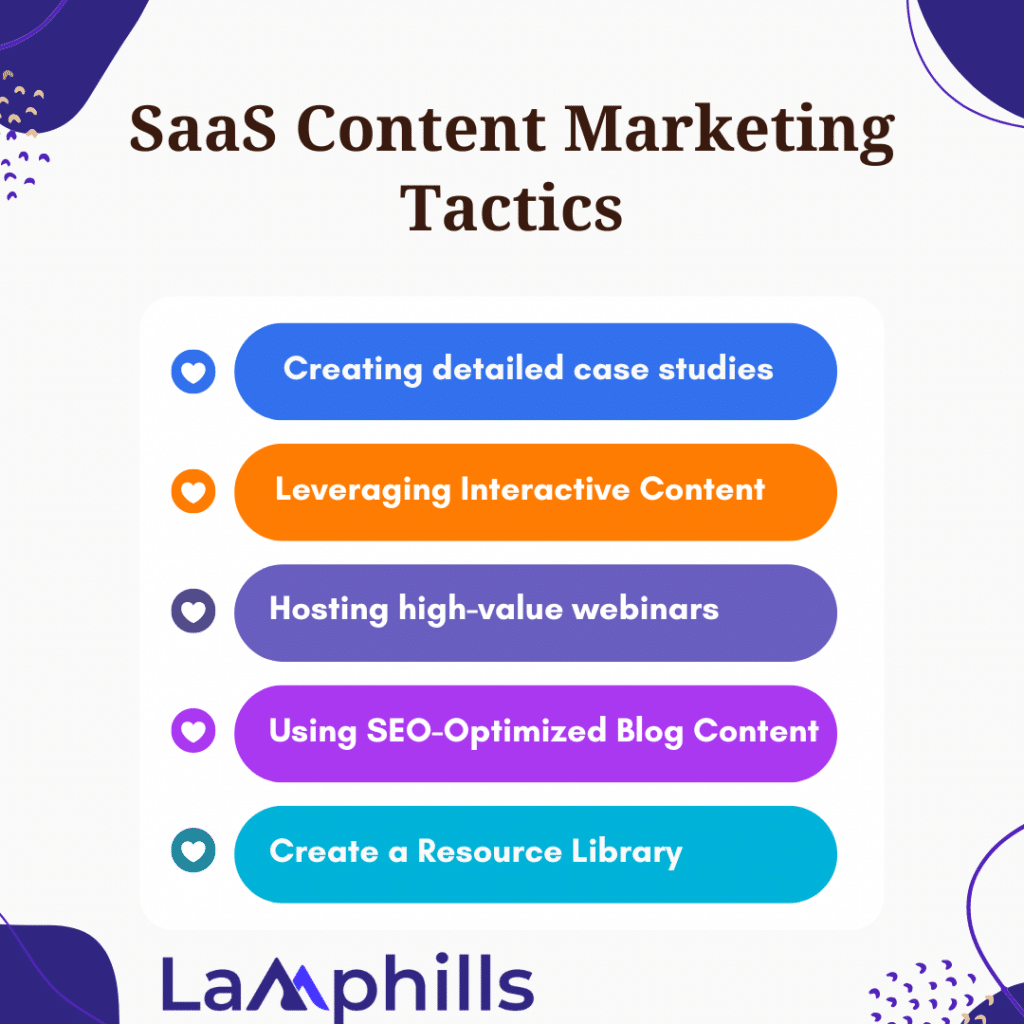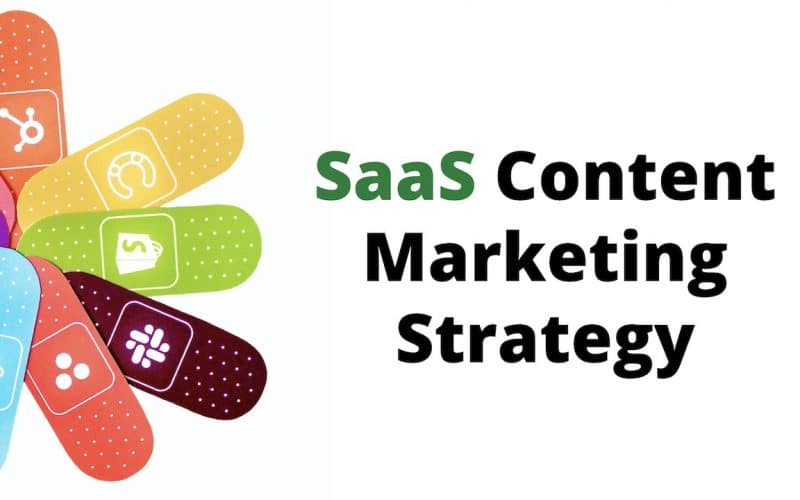The other day, I was examining our SaaS content marketing strategy and realized how important it is to always evolve our tactics. It is not enough to simply create content; it must also drive engagement and conversions. Today, I’d like to share with you tried-and-true SaaS content marketing methods for increasing engagement and conversions. These tactics go beyond the fundamentals and give insights that most websites do not provide. Let’s get into it!
What is SaaS Content Marketing?
Content marketing is an effective marketing strategy that SaaS companies may employ to acquire and retain their target clients. When done effectively, B2B SaaS companies can naturally attract the right customers without spending money on promotion.
Your business will determine the content marketing channels you use for a SaaS (software-as-a-service) company. However, the best place to begin is on your website. In this article, I will show you how to decide what type of content to put on your website. From there, you can expand your website’s content distribution options to include SEO (search engine optimization), advertisements, sponsorships, email marketing, and social media channels.
Okay, enough with my babbling. Let’s look at the benefits of a content marketing strategy for your SaaS business.
Benefits of SaaS Content Marketing
SaaS content marketing has various benefits. Here are some of the main benefits:
#1. Building Trust and Credibility
Quality content positions a brand as a thinking leader. SaaS organizations may create trust with prospects and existing customers by addressing industry pain points, responding to common questions, and providing actionable information.
#2. Educating Users
SaaS products often have a learning curve. Effective content marketing offers tutorials, tips, and tools to help users get the most out of their products. This educational method promotes user adoption and product stickiness.
#3. Improving SEO and Online Visibility
Quality content helps to rank better in search engines. For SaaS organizations, this is critical for capturing organic leads, particularly when customers look for answers to specific problems that the program addresses.
#4. Nurturing prospects and Reducing Churn
SaaS companies can nurture potential prospects by guiding them along the sales funnel using content. Furthermore, consistently giving good content to existing consumers helps reduce churn by constantly adding value to their experience.
#5. Cost-effective Customer Acquisition
Content marketing frequently generates higher ROI than traditional advertising strategies. SaaS organizations can attract potential clients more effectively and affordably by generating great content that addresses their needs.
#6. Building a Community
Engaging content can help users feel more connected to one another. Forums, comment sections, and feedback loops started by content can result in invaluable user-generated content and insights.
#7. Highlighting Product upgrades and Features
The SaaS industry is always changing, with frequent product upgrades and new features. Content marketing allows you to notify and explain these modifications to your users, keeping them informed at all times.
SaaS content marketing is about more than just providing content; it’s about building strong relationships, improving user experience, and maintaining a dominant position in a competitive field. Without it, SaaS companies risk losing relevance, trust, and consumer engagement in an ever-changing digital landscape.
Crafting Content Marketing Strategies for SaaS Growth
Are you ready to grasp the fundamentals of a successful SaaS content marketing strategy? Take a look at these professional tips.
#1. Identify your audience
SaaS solutions, unlike bread or toilet paper, have an all-encompassing target audience. Chances are that your company does something extremely specialized and creates items that cater to a specific type of business, therefore, you should concentrate your efforts on recruiting those people.
Consider who the best decision-makers for such businesses would be. What industry are they in, and what is their typical job title? How old are they, what is their income level, and where do they typically go for information online?
Once you’ve determined who you’re targeting, you may examine what types of content would be most beneficial to them. Put yourself in their shoes. What qualities would you search for in their position?
#2. Consider customers’ pain points
Every corporate decision-maker seeking information and analyzing SaaS companies has a problem or two they want to solve. They are also likely to encounter difficulties in their hunt for solutions. As a marketer, it is your responsibility to identify and address these issues.
Consider constructing a customer journey map to guide yourself through each stage of your customer’s purchasing process as they move through your marketing funnel. Consider the responses to the following questions to find potential pain spots to address.
- What type of problem does your customer hope to solve by purchasing SaaS – labor, time management, technical, emotional, or something else?
- Is it completely evident from your sales content how your product meets the customer’s business needs?
- Are there any complications that a buyer can encounter during the purchasing process?
- Is your onboarding procedure intuitive and user-friendly?
#3. Focus on prime keywords
According to Mike Sonders, approximately 53.6% of SaaS sales traffic begins with a direct search for important information. Some of those clients may not be aware that they are seeking SaaS products and are instead looking for answers to specific pain areas.
Others may have already considered you as a solution and are seeking product reviews or other brand information. Still, others may already have purchased or used your product and want some advice on how to get the most out of it.
Consider the search terms that all of those people would use to find products and content similar to yours. Conduct extensive keyword research to identify some excellent possibilities to suit all of them, and then begin creating content to match. Keyword research tools, such as Google Keyword Planner or Ahrefs, can be useful.
#4. Set your content goals
Once you’ve determined who you’re targeting and which keywords you’ll use to help them find your content, you can define campaign goals.
Remember that excellent business objectives are always SMART (specific, measurable, achievable, relevant, and time-bound). What do you want to accomplish with your next SaaS content marketing campaign? Are you looking to enhance conversion rates, email signups, traffic, or something else entirely?
To track achievement, select associated key performance indicators (KPIs), and don’t be afraid to think outside the box (such as online traffic). Examples of great SaaS content marketing KPIs include the following:
- The number of people who signed up for free trials or demos
- Lead quality.
- Lead Conversion Rate
- Engagement indicators (such as social shares and stay time)
- Customer Acquisition Cost
Check and assess your campaign’s results frequently, and adjust your strategy as appropriate.
#5. Develop a content development and distribution strategy
Once you’ve determined your target keywords and KPIs, you can start creating dynamic, effective content that your ideal customers will enjoy. Begin by developing a content development procedure that your entire team agrees on.
Project management software can help you keep track of who will handle each stage of content development, such as research, creation, editing, and publishing. A well-planned content calendar will help you keep track of your numerous marketing platforms and ensure that they are continuously filled with timely content.
Develop a distribution strategy as well. In addition to determining where and when you’ll publish your content, consider if you’ll categorize it using an index. Will everything be publicly open, or are you considering any closed content as well?
Proven SaaS Content Marketing Tactics to Increase Engagement and Conversions

Here are some innovative strategies that have worked brilliantly for us and will do the same for you.
#1. Creating detailed case studies
Case studies are more than testimonials; they include extensive information on how your product solves real-world challenges.
How To Implement It:
- Identify Success Stories: Look for clients who have seen big outcomes with your SaaS solution.
- Structured Template: Use a template to structure your case study, ensuring that you address the problem, solution, and outcomes.
- Detailed Insights: Include quantitative data and customer quotes to increase credibility. According to the Content Marketing Institute, case studies are among the top three most effective types of content for B2B marketers.
Case Study Template
- Title: Highlight a success story.
- Introduction: Provide a brief introduction of the customer and their industry.
- Challenges: Explain the issues people encountered before using your product.
- Solution: Explain how your product addresses these issues.
- Results: Use particular facts and quotes to demonstrate the results obtained.
#2. Leveraging Interactive Content
By immersing the audience in the experience, interactive content such as quizzes, calculators, and interactive infographics dramatically increases engagement.
How To Implement It:
- Identify User Needs: Create interactive tools to address your audience’s individual pain spots. For example, a ROI calculator might help potential consumers understand the financial benefits of your SaaS solution.
- Tools: Use platforms such as Typeform or Outgrow to develop interactive elements. Demand Metric reports that interactive content generates twice as many conversions as static content.
#3. Hosting high-value webinars
Webinars are a wonderful method to connect with your target audience, deliver value, and generate leads.
How To Implement It:
- Expert Speakers: Ask industry professionals or thought leaders to co-host your webinars. This increases credibility and draws a wider audience.
- Engaging Format: Make your webinars more interactive by integrating Q&A sessions, polling, and live demonstrations.
- Follow-up: Send emails containing the webinar tape and extra resources. According to GoToWebinar, 73% of B2B marketers and sales leaders believe webinars are the most effective approach to acquiring high-quality leads.
I recall our first webinar, which was a valuable learning experience. Despite initial nerves, it turned out to be a huge success. The direct engagement enabled us to answer our audience’s inquiries in real-time, resulting in a 30% increase in lead generation that month.
#4. Using SEO-Optimized Blog Content
SEO is crucial for generating organic traffic to your website. By optimizing your blog content for search engines, you may increase the number of visits and convert them to leads.
How To Implement It:
- Keyword Research: Use tools such as SEMrush or Ahrefs to find high-traffic keywords related to your target audience.
- Quality Content: Create detailed, high-quality articles that add value to your audience. Google’s algorithm prioritizes detailed content that answers consumers’ questions.
- Internal Linking: Use internal links to direct visitors to further relevant content on your website. This might increase time on the site and lower bounce rates.
#5. Create a Resource Library
A resource library full of ebooks, whitepapers, and guidelines may help you create authority while also providing your audience with essential information.
How To Implement It:
- Valuable Content: Create detailed resources that address specific industry concerns or offer actionable insights.
- Gated Content: Utilize gated content to collect leads. Provide these resources in exchange for contact information, which can then be utilized to conduct targeted marketing efforts.
Resource Library Template
- Title: A catchy and informative title for the resource.
- Introduction: A brief overview of the topics covered in the material.
- Chapters/Sections: A detailed summary of the content organized by section or chapter.
- Conclusion: Summarize the important points and encourage additional discussion.
Tools to Make SaaS Content Marketing Easier
With the best content marketing tools for SaaS, you can turn your content marketing into a smooth process. Here are my recommendations for which SaaS content marketing platforms to employ for each stage of the inbound marketing process.
Systematizing the Production Process
If you try to do content marketing without a project management framework in place, you will be in full chaos. However, by systematizing the production process, you will:
- Ensure consistent content production.
- Easily identify bottlenecks in the process. (What are we waiting for?)
- Reduce unneeded communication and calls between team members in different time zones.
- Increase the accountability of content team members for their role in the process.
- Enforce content timescales and reduce delays.
Even if you already use an internal project management platform for other projects, I recommend creating a separate tool for your SaaS content marketing strategy.
1. Trello
Trello is excellent since it is quite easy to use, and you can test it for free. While there are numerous other platforms designed expressly for content marketing, Trello is simple for all team members to use and has excellent functionality for tracking progress.
I recommend creating a Trello board for each form of content (videos, articles, etc.), a list for each stage of the creation process, and a card for each piece of content. As each piece of content progresses through the stages of production, team members simply drag the card to the next list, adding any comments, deadlines, and files.
2. Coschedule
CoSchedule is a powerful alternative that is specifically tailored for content marketing. It could be a better option for larger corporations ready to pay between $19 and $39 per month per user.
For smaller SaaS organizations with a significant number of team members involved in the content creation process, this may be prohibitively expensive in comparison to Trello.
3. Asana
Asana is a comprehensive project management application that can be used efficiently for content management. It provides a structured and collaborative environment for planning, organizing, and carrying out various content-related tasks.
The application also allows you to establish a social media content calendar for easier task management and meeting your SaaS content authoring objectives.
Asana allows you to create unique projects for various sorts of content, such as blog entries, social media campaigns, and video production.
Asana also provides project templates that can be customized for various content categories, assuring consistency and efficiency in your workflow.
4. Slack
Slack is a real-time messaging application that allows for rapid collaboration among team members. Set up separate channels for individual content projects to keep discussions structured.
You can schedule notifications for important content milestones or impending deadlines. This ensures that the team is aware of key developments and stays on course.
Writing and SEO
1. Airstory
Unlike Microsoft Word and Google Docs, Airstory is developed from the ground up for writing content, therefore, it contains amazing features like:
- Publish straight on WordPress
- Save research notes with the Chrome addon.
- Time travels back to past versions of your paper.
- Borderless pages (“you’re not faxing your document to 1994”) and the option to drag your notes onto the page.
- Highlight the text you’ve written and transform it into a note with one click, so you can keep it for later.
- Right-click on a photo or highlight text anywhere on the web and return it to your Airstory document.
- Most importantly, 97.4% of users can use it for free.
Read Also: The Best Canva Alternatives for Every Budget
Other important alternatives to consider:
- Google Docs: A timeless classic that will not go away anytime soon. It’s free to use and simple to collaborate and share documents with others, but the biggest disadvantage is that it was designed for regular users rather than copywriters, so it misses some of Airstory’s useful features.
- Grammarly: Grammarly is an excellent tool for fixing simple spelling and grammatical problems. The subscription version additionally offers more advanced tips for improving your copy:
- Canva: Canva is a simple design tool that lets you generate visually appealing graphics, social media posts, and promotional materials for your SaaS content.
- CoSchedule Headline Analyzer: Analyzes and scores your headlines to boost their efficacy and engagement.
- Writer: This is a business application comparable to Grammarly. The difference here is that Writer lets you upload brand and writing style rules, ensuring that your content has a consistent voice regardless of who writes it. Although this is a premium product, you may get a sense of how it works by using their free grammar and proofreading checker tools.
- Yoast: If your SaaS content marketing strategy is around boosting your SEO performance, you’ll need Yoast. Yoast’s WordPress SEO plugin makes automatic suggestions for improving your content to improve search engine rankings. Upgrade to the premium version for $89 per year and never go back.
Tracking Results
The target you choose will determine how you track SaaS content marketing ROI and attribute results. As a result, you may not require all of these tools; still, here is a list of the ones you should consider.
1. Google Campaign URL Builder
As you market your content, you’ll need to be able to track where your visitors and signups are coming from so that you can properly attribute them.
2. Google Analytics
Google Analytics is still the finest and simplest tool to track what’s occurring on your website. Once configured, you can use it to monitor everything from traffic to sign-ups.
3. PipeDrive
You’ll need to employ a CRM to collect the information from any leads who sign up as a direct result of your content.
Pipedrive excels at this for SaaS companies since it not only stores the UTM data of all sign-ups, but it also offers an easy-to-use sales pipeline. In practice, this means you can track whether your sign-ups are free or upgrade to a paid plan, as well as establish filters to highlight all leads that originate from a given article or promotional source, making performance reporting a breeze.
4. ProfitWell
Profitwell is the most effective solution for tracking complex SaaS business KPIs like revenue, attrition, user engagement, and acquisition. And it’s completely free to use.
5. Mention
If the primary purpose of your SaaS content marketing strategy is to raise brand awareness, try using Mention. This application assists you in monitoring the web and social media for mentions of your brand, allowing you to observe what is being said and how your brand is regarded.
Content Promotion
1. Buffer
Take the worry out of publishing promotional social media updates. Buffer can publish for you on Facebook, Twitter, Instagram, LinkedIn, and Pinterest while also analyzing your efforts.
2. Mailchimp
Mailchimp is an email marketing platform that allows users to create and distribute newsletters and targeted email campaigns.
It allows you to create automatic email campaigns depending on user behaviors like sign-ups and trial activations. This guarantees that your audience receives timely and targeted content, which nurtures leads and drives engagement.
You can plan and schedule your newsletters to be distributed at the best times, increasing open rates and engagement.
3. Hootsuite
Hootsuite is a social media management software designed to increase SaaS content promotion. It streamlines social media tasks, increases interaction, and provides analytical insights.
With a single dashboard, users can easily manage multiple social media profiles across platforms such as Facebook, Twitter, LinkedIn, Instagram, and others, simplifying content delivery across various marketing channels.
The bulk scheduling tool allows you to upload and schedule many posts concurrently. This is particularly handy for creating content calendars and maintaining a consistent stream of posts.
Examples of SaaS Companies with Effective Content Marketing
Looking for inspiration? Here are two examples of SaaS companies that have had great success with content marketing.
#1. Gong
Gong.io is a prominent provider of AI-driven solutions that translate customer interactions into actionable data for sales teams to make strategic decisions.
Their content marketing strategy lays forth a roadmap for SaaS content success, which you can emulate by understanding and applying essential ideas.
First and foremost, they created a centralized blog as their content hub, tailoring categories to a clearly defined audience base and presenting a varied range of valuable content. They concentrated on releasing unique, data-driven insights to differentiate their content as insightful and exclusive.
Following that, they repurposed content for social channels, particularly those in which your target audience is actively engaged. For example, their innovative content, “The Startling Truth: How Cursing Impacts Sales,” generated interest and significant conversations:
The company attempted to create a community through thought leadership, using PR content, guest pieces, and authoritative articles to position your brand as an industry leader.
They focused on engagement measures such as LinkedIn followers, which can be more telling than traffic figures, and created a community through contests, prizes, and humanizing your SaaS brand.
Gong.io’s success is due to its holistic approach, which includes mixing varied content formats, engaging with the community, and exploiting unique data to differentiate itself in the market. Understanding these ideas enables you to imitate and adapt their techniques to improve your content marketing efforts.
#2. HubSpot
If you want to develop an SEO-based content marketing strategy, HubSpot is an excellent example to follow.
This platform offers sales and marketing software in a highly competitive market, but their strategy is incredibly simple: consistently create high-quality content for all stages of the marketing funnel, from TOFU articles like “how to write a blog post” to BOFU content like “how to use a CRM”.
The concept behind this is one that most other SaaS companies can replicate: by focusing on content throughout the marketing funnel, they not only attract new users who are ready to buy right away, but they also build long-term brand awareness among marketers who aren’t ready to buy yet but may in the future.
As a result of this effort, HubSpot has tripled its organic traffic in only five years and ranks #1–3 for approximately 13,000 terms in organic search.
SaaS Content Marketing Strategy Template
Ready to elevate your SaaS content marketing efforts? Download our comprehensive SaaS Content Marketing Strategy Template now and start driving engagement and conversions today!
Key Takeaways
- Customize your content to address your audience’s individual pain points and needs to increase engagement.
- Engage your audience with quizzes, calculators, and interactive infographics to increase conversions.
- Organize high-value webinars featuring industry leaders to engage and convert your audience.
- To increase organic traffic, optimize your blog content for search engines.
- A well-organized resource library can help you establish authority and generate leads.
Conclusion
Mastering SaaS content marketing necessitates a systematic approach beyond general suggestions. Developing in-depth case studies, employing interactive content, holding high-value webinars, optimizing for SEO, and creating a resource library can all greatly increase engagement and conversion rates. Personalizing your content and using templates might help you streamline your efforts and maintain consistency.
Are you prepared to use these tried-and-true SaaS content marketing strategies? What techniques have you found most helpful for increasing engagement and conversions? Share your experiences and let’s learn from one another!
Related Articles
- What Is Lead Generation Data: Purpose, Analysis, Tools and Best Strategy
- SEO Outreach Explained: A Beginner’s Guide to Getting Quality Backlinks
- AIPRM PROMPTS FOR COMMUNITY RELATIONS IN 2024
- What is Content Syndication and Why You Should Start Using It Today
- How to Create Promotional Content That Drives Results for Your Brand(Plus Examples)






